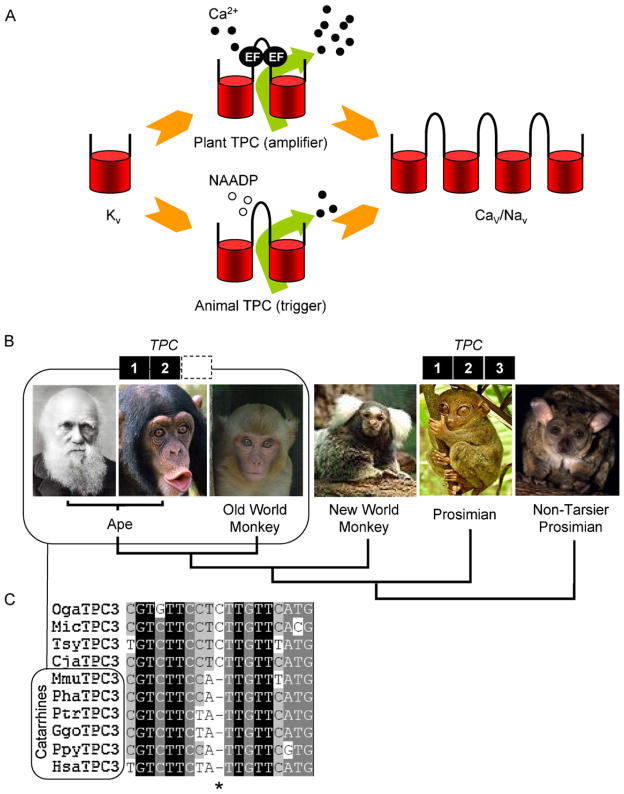Fig. 4.
Evolution of TPCs. (A) Schematic outlining a possible trajectory for the evolution of voltage-gated ion channels and TPCs. Voltage-sensitive K+ channels (Kv; one-repeat) may have duplicated to form TPCs (two-repeat) and the TPCs duplicated to form voltage-sensitive Ca2+ (Cav) and Na+ (Nav) channels (four-repeat). Plant TPCs by virtue of their EF hands may serve to amplify Ca2+ signals (middle top) whereas animal TPCs (which lack EF hands) may have evolved to trigger Ca2+ signals in response to NAADP (middle bottom). (B) TPC gene complement of selected primates (from left to right; Homo sapiens, Pan troglodytes, Maccaca mulatta, Callithrix jacchus, Tarsius syrichta, Otolemur garnettii) highlighting lack of a functional TPC3 gene in Catarrhines (box). (C) Multiple sequence alignment of primate genomic sequences. A conserved cytosine residue within the TPC3 gene (*) is deleted in Cattarhines [98]. Abbreviations used are: Oga, Otolemur garnettii; Mic, Microcebus murinus; Tsy, Tarsius syrichta; Cja, Callithrix jacchus; Mmu, Maccaca mulatta; Pha, Papio hamadryas; Ptr, Pan troglodytes; Ggo, Gorilla gorilla; Ppy, Pongo pygmaeus; and Hsa, Homo sapiens.

